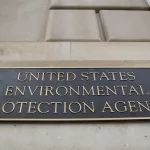(AP) – Federal and state environmental officials are looking into what caused a large release of partially treated wastewater in Hilo last week and what can be done to prevent future incidents.
The investigation is focusing on a discharge of 607,000 gallons of wastewater into Puhi Bay on Friday between 8:30 a.m. and 12:30 p.m. The wastewater entered the bay without undergoing a required chlorine disinfection process.
Hawaii County is under an administrative consent order with EPA to make much-needed upgrades to the outdated plant that has had a string of accidental wastewater discharges over the years. The order calls for major rehabilitation and replacement of corroded equipment.
Puhi Bay’s shoreline hosts a summer campground used by Hawaiian Home Lands beneficiaries who live in Keaukaha and Panaewa. Several said their kids were in the water all day on Friday and only learned through social media and word of mouth that the water might have been unsafe for swimming due to high bacterial levels. Others noticed signage sometime mid to late afternoon. The Department of Health says the county started erecting warning signs starting at 2 p.m. The signs said it was unsafe to swim or fish because of “sewage contaminated water” and that exposure could result in illness.
Sheralyn Kalua, a lifelong resident of Keaukaha homestead, said her two teenage sons saw a county worker putting up an unsafe water sign at 3:30 p.m.
Blossom Evans has four children who are also camping at Puhi Bay on land managed by the Department of Hawaiian Home Lands.
“I’m almost 34 and this has been happening since I was a little girl,” she said. “When is this going to get fixed?”
Evans worries for her family’s health and said the county should inform the public right away when something like this happens.
Hawaii County has been hit with fines from the EPA and state Department of Health since at least 2016 over the derelict state of plant equipment and illegal discharges into the ocean.
The county issued a press release about the latest incident on Sunday some 48 hours after it happened.
Christy Swafford of the Department of Environmental Management said in an email that it took two days to release a public statement about the discharge because of “lack of internet connectivity and human error.” When the county issued a press release, it came from the office of Mayor Mitch Roth.
The county informed the state Department of Health about the accident at 2:41 p.m. on Friday. DOH asked the county to issue a press release and to collect daily shoreline samples, according to DOH spokesperson Kristen Wong.
DOH issued a public water quality advisory on Friday afternoon. It was canceled Tuesday.
Roth apologized for the incident in a press release Tuesday, describing the accidental discharge as an “isolated incident that should not repeat itself.”
“We understand the community’s concerns and assure them that we are working diligently to monitor water quality and implement additional safeguards to ensure the safety and wellbeing of our residents and environment,” he said, adding that he appreciates the community’s patience.
Lynda Lovon said she swims in Puhi Bay and is disturbed by what she considers a lack of communication with the public about the wastewater release.
“Nobody knew about it. Dozens and dozens of families swam in contaminated water all weekend long,” Lovon said in an email.
Given how troubled the plant is, timely communication with the public should be prioritized, she said.
“They need some kind of alert system” until they can fix the dilapidated plant, Lovon said.
The EPA is coordinating with the state Department of Health to determine the plant’s compliance with its permit and with the Clean Water Act, according to spokesperson Alejandro Diaz.
Under the Clean Water Act, permit holders can be fined up to $56,460 per day, per violation, for effluent violations, Diaz said.
Part of EPA’s investigation will include finding out what time Hawaii County posted its signage, Diaz said.
“It is our understanding that notification was provided to Hawaii DOH, signs were posted and beach sampling was instigated on the afternoon of June 21,” he said.
A DOH field staff member in Hilo verified that at least some of the identified sites had signs, Wong said.
The county-run Hilo Wastewater Treatment Plant has a permit from that the U.S. Environmental Protection Agency that establishes effluent limits for enterococcus bacteria. The plant discharges treated wastewater through an outfall and diffuser system that is 4,500 feet offshore in Puhi Bay. The outfall lies east of the Hilo breakwater. Keaukaha Beach Park is nearby.
Although some social media users say they experienced signs of illness after swimming in the bay on Friday or over the weekend, that’s likely unrelated to the wastewater release due to the ocean’s ability to dilute waste, according to DOH.
Bay waters would have been “minimally impacted” due to the outfall’s location and dilution effects, according to the agency.
The results of monitoring provided by Hawaii County indicated enterococci bacteria levels did not exceed the threshold in the last two days, Wong said on Tuesday.
State officials told Hawaii County that it could stop sampling and remove the signs on Tuesday.
Evans said she’s attended countless meetings with mayors and County Council members over the years where residents keep saying that fixing the Hilo wastewater plant is among their top concerns. At a recent Keaukaha Community Association meeting when candidates for public office showed up, the issue came up again.
“They were talking about how they’ll help the community and they will get this resolved. They say that every election,” Evans said.
Keaukaha is the second oldest Hawaiian homestead in the state. It was established in 1924 after Congress passed the Hawaiian Homes Commission Act two years earlier.
© copyright 2024 Associated Press. All rights reserved
AP Photo
